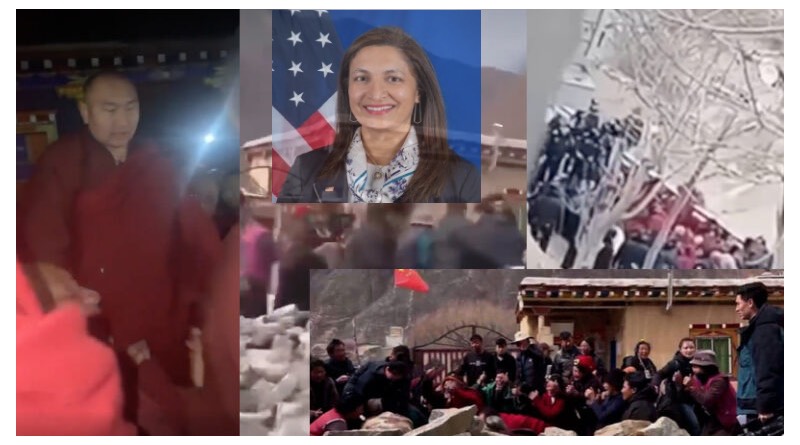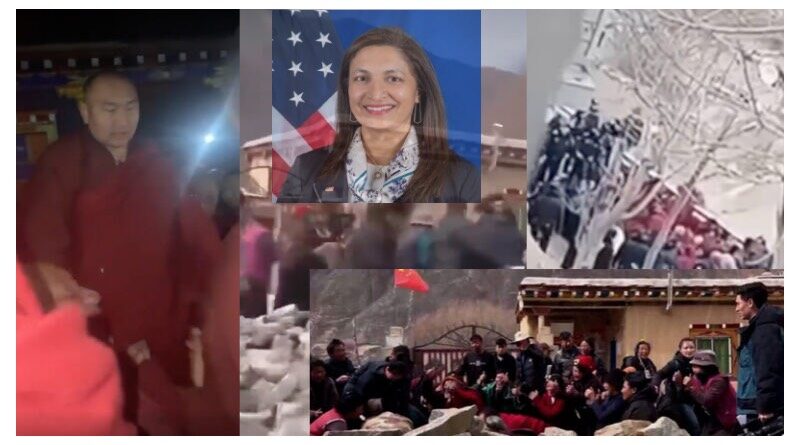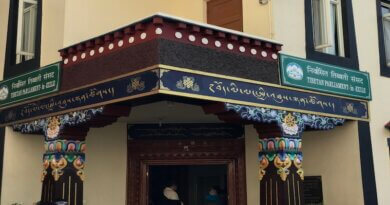US Special Coordinator for Tibet Decries Chinese Repression of Tibetan Protests, Calls for Respect of Human Rights
By Tsering Choephel

DHARAMSALA, 26 Feb: Uzra Zeya, the US Undersecretary of State for Civilian Security, Democracy, and Human Rights, who also serves as the Special Coordinator for Tibetan Issues, has expressed deep concern about the Chinese authorities’ mass arrests of Tibetans who staged peaceful protests against China’s hydroelectric dam project in the region and the impending forced relocation.
“Deeply concerned by reports of the PRC’s [People’s Republic of China] mass arrests of Tibetans protesting construction of a dam that threatens displacement of villages & destruction of monasteries,” said Uzra Zeya in a post on X (formerly Twitter) on Sunday.
“[China] must respect human rights & freedom of expression and include Tibetans in the development & implementation of water and land management policies,” the Special Coordinator for Tibetan Issues said. She added, “These centuries-old monasteries are home to hundreds of Tibetan Buddhist monks & contain irreplaceable cultural relics.”
According to several reports, Chinese authorities on 23 February arrested more than 1000 Tibetans, including monks along with the local residents of the region. The arrested Tibetans, detained in various places throughout the Derge region were reportedly forced to bring their own bedding and tsampa, indicating they will not be released anytime soon.
In several heart-breaking videos leaked from the region making viral rounds on social media, Tibetans, including monks and the elderly, can be seen crying in pain, kneeling, and begging the local authorities to revoke the planned dam project and the relocation of their villages and monasteries.
The reports of Chinese authorities’ use of force, including water cannons, pepper spray, and tasers against the peaceful Tibetan protesters, lay bare the brutal and inhuman policies and rule of China in occupied Tibet.
The peaceful protest by a large number of Tibetans started on 14 February following the announcement made by the Chinese authorities calling for the relocation of at least six monasteries and hundreds of households in two villages to clear the area for the construction of the 2,240-megawatt Gangtuo hydropower station on the Drichu River in China’s demarcated Derge County in Kardze prefecture and Jomda in eastern Chamdo prefecture in the so-called Tibetan Autonomous Region.
Among the monasteries that would face complete submergence if the dam project is carried on include Wontoe and Yena monasteries belonging to the Sakya sect of Tibetan Buddhism. Some of the wall murals in these monasteries hold significant cultural heritage, dating back to the 14th to 15th century, surviving even the horrendous years of the Cultural Revolution.
Moreover, the construction of this dam, like many other massive dams China has built across Tibet’s rivers, will adversely affect the fragile ecosystem of Tibet’s environment.
Penpa Tsering, the President of the Central Tibetan Administration (CTA), condemned China’s brutal crackdown on Tibetans peacefully protesting, saying, “The crackdown on non-violent protests in Derge is beyond condemnation. The Chinese authorities’ disregard for the rights of Tibetans is unacceptable by any measure. The punitive acts demonstrate China’s prioritization of its ideology and interests over human rights. We call on the Chinese government to release all those detained and to respect the rights and aspirations of the Tibetan people. The world needs to hear the Tibetans’ voices and confront the truth of Chinese misrule in Tibet.”
Tibetans in exile and Tibet supporters have since started staging protests and campaigning for the cessation of China’s violent treatment of peaceful protests.
The situation highlights China’s extensive history of dam construction, with over 30,000 dams – a staggering figure surpassing the combined total of dams in the rest of the world. China completed the construction of yet another dam, this time in Tibet’s Purang region in Ngari, as of January 2024. Tragically, the relentless expansion of hydroelectric projects has resulted in the forced eviction of Tibetan communities, as evidenced by the Hydropower Project in Rebkong, Amdo in June 2023. Adding to the plight, since May 2022, China began the construction of what is touted as the world’s first 3D-printed dam on the Ma Chu (Yellow River). These developments underscore the ongoing challenges faced by Tibetan communities, who have borne the brunt of China’s relentless pursuit of hydroelectric power.





